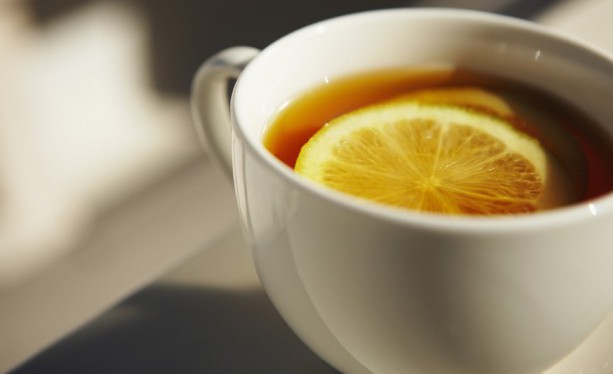
Good news for women who like to drink their daily cup of black tea or orange juice: a new study suggests that consuming foods containing flavonols and flavanones – subclasses of dietary flavonoids found in tea and citrus fruits and juices – is linked to a decreased risk of developing epithelial ovarian cancer, the fifth leading cause of cancer death among women.
The study, conducted by researchers at the University of East Anglia (UEA) in the UK, was recently published in the American Journal of Clinical Nutrition.
Ovarian cancer affects over 6,500 women in the UK and 20,000 women in the US each year, with an estimated 1 in 73 women developing the disease during their lifetime. Two-thirds of these women will ultimately die of ovarian cancer. Epithelial ovarian cancer — the most common form of the disease — is where the cancer begins in the surface layer covering the ovary.
This type of cancer “remains a highly lethal malignancy,” note the authors, adding that few modifiable risk factors for the disease have been established. While several previous studies have suggested that a diet rich in fruits and vegetables may be associated with a decreased risk, subsequent research has produced inconsistent findings.
For example, one nationwide study found no association between risk of ovarian cancer and total flavonoid intake, but it did find a decreased risk linked to dietary intake of apigenin, a flavone commonly found in celery.
Plants contain flavonoids that adjust key cellular signaling pathways and regulate cancer-inflammation pathways, the UEA team says, which suggests flavonoids might be the compounds in plants that could reduce ovarian cancer risk. Flavonoids include flavonols — found in tea, red wine, apples and grapes — and flavanones — found in citrus fruit and juices.
Daily consumptions of black tea ‘linked with a 31 percent reduction in risk’
To further investigate the link between flavonoid intake and ovarian cancer risk, the researchers studied dietary habits among 171,940 women between the ages of 25 and 55 as part of the Nurses’ Health Study and Nurses’ Health Study II over the course of 3 decades.
“This is the first large-scale study looking into whether habitual intake of different flavonoids can reduce the risk of epithelial ovarian cancer,” said lead author Dr. Aedin Cassidy, from UEA’s Norwich Medical School.
To calculate the participants’ dietary intake, the team analyzed validated food-frequency questionnaires that were collected every 4 years and found that main dietary sources of flavonols were black tea (31 percent), onions (20 percent) and apples, while the main sources for flavanones were citrus fruit (36 percent; 27 percent from orange intake) and juices (63 percent; 54 percent from orange juice).
During the 16-22 years of follow-up, a total of 723 cases of ovarian cancer were confirmed among participants. Results showed that participants who had the highest intakes of flavonol and flavanone had a statistically significant lower risk of developing epithelial ovarian cancer than those who had the lowest intakes.
“The main source of these compounds include tea and citrus fruits and juices, which are readily incorporated into the diet, suggesting that simple changes in food intake could have an impact on reducing ovarian cancer risk,” said Dr. Cassidy. “In particular, just a couple of cups of black tea every day was associated with a 31 percent reduction in risk.”
Anti-cancer properties in flavonoids
The team said that additional prospective studies are needed to confirm their results, as several limitations could impact the validity of this latest study. For example, the mean cumulative dietary flavonoid intakes were calculated from recent US Department of Agriculture (USDA) databases with input from other sources, but flavonoid contents can vary in foods, depending on growth and processing conditions. Therefore, it was not possible to obtain exact flavonoid counts.
However, the validity of these findings is supported by a growing body of evidence indicating that flavonoids may have potent anti-cancer properties. Researchers have now identified thousands of flavonoids, all of which are structurally similar, containing a ring of six carbon and hydrogen atoms called a benzene ring. There are six flavonoid subclasses, including anthocyanidins, flavon-3-ols, and flavones, with each containing hundreds of compounds within them.
The wide variety of flavonoids results in a diverse array of biological activities, such that specific flavonoids are thought to reduce the risk of specific cancers. Certain flavonoids, for example, act specifically on hormone-related cancers. Flavonoids that are phytoestrogens — compounds that act as a weak form of estrogen — affect tumors regulated by hormones, such as breast, prostate, and ovary. Although there are many molecular targets, the primary anti-cancer mechanism of flavonoids is to inhibit processes that induce cancer such as proliferation, inflammation and angiogenesis.
While additional research is needed to further understand the link between flavonoid consumption and reduced cancer risk, experts say that for now, there is no downside to eating a diet packed with flavonoids and all of the other healthy compounds found in fruits and vegetables.
